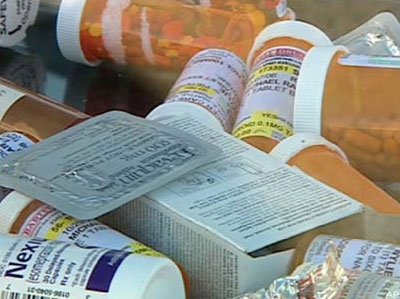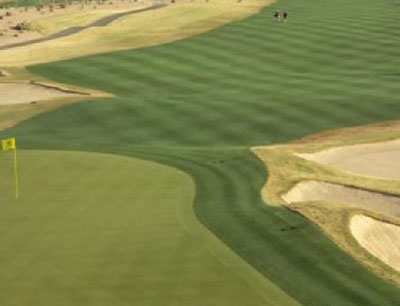Recycled irrigation water used for golf courses, parks, and other landscapes may contain small amounts
pharmaceutical and personal care products. A two-year, field study demonstrated the ability of golf
course fairway grasses to breakdown contaminants and prevents them from reaching groundwater.
The scarcity of potable water in arid and semiarid environments has led to the wider use of recycled water for irrigating golf courses, parks, and other landscape areas. One concern using recycled water for irrigation has been the presence of pharmaceutical and personal care products in water that may percolate below the courseCareLinksPageContent zone of grasses; however, very few multiyear field studies are available in the scientific literature.

|
|
Recycled wastewater from treatment facilities contains a wide range of pharmaceutical and personal care products. Although concentrations are extremely low, typically in parts per trillion, researchers investigated the fate of products found in recycled irrigation water applied to golf course fairways. |
Recently, the
Journal of Environmental Quality
published a two-year field study that
assessed 13 pharmaceutical products in recycled irrigation water applied to the
fairways of four golf courses in the southwestern United States. The project,
initiated by the Northern California Golf Association and partially funded by
the USGA, demonstrates the ability of golf course grasses to breakdown an array
of pharmaceutical and personal care products.
The golf course sites varied by climate and soil type but were similar regarding turfgrass management. The results showed the presence of at least one pharmaceutical compound in nearly all samples collected, although concentrations were substantially lower after moving through the turf and soil. The percent reduction for products in drainage water was 100% in 22 of 52 cases, 98 to 100% in 27 of 52 cases, and 73 to 94% in 3 of 52 cases (a case defined as a specific compound measured at a specific site). Three of the 13 compounds tested were the most commonly found in drainage water, representing nearly 80% of all reportable detections. The amount migrating below the courseCareLinksPageContent zone was less than 0.0036 ounces per acre (<250 mg ha−1) for all compounds. This is roughly a single pill spread out over an entire football field. The field studies demonstrate the ability of golf course

|
fairway grasses to breakdown contaminants and prevent them from reaching groundwater.
Field-Scale Monitoring of Pharmaceutical Compounds Applied to Active Golf Courses by Recycled Water
Acknowledgements:This research was supported by Water Environment Research Foundation and the Water Reuse Research Foundation, with additional funding provided by 28 water or sanitation agencies, and other interested agencies or organizations, including the USGA.

